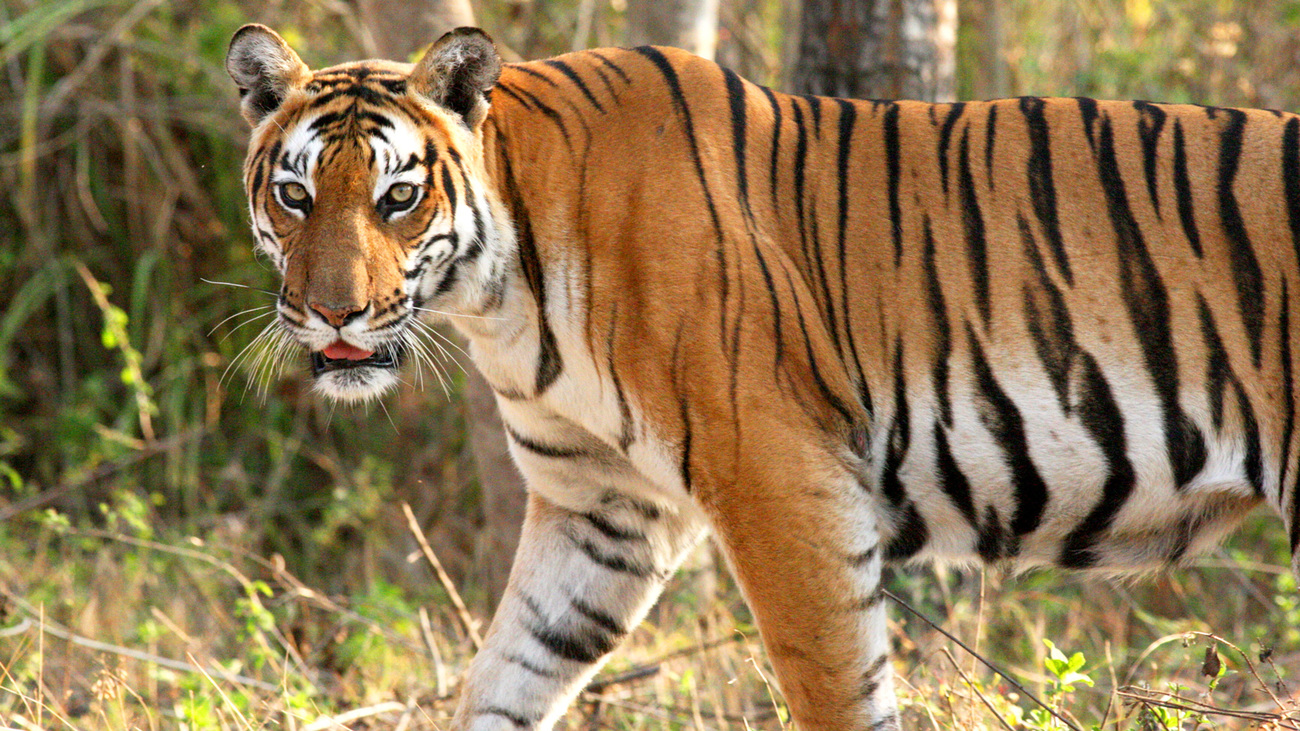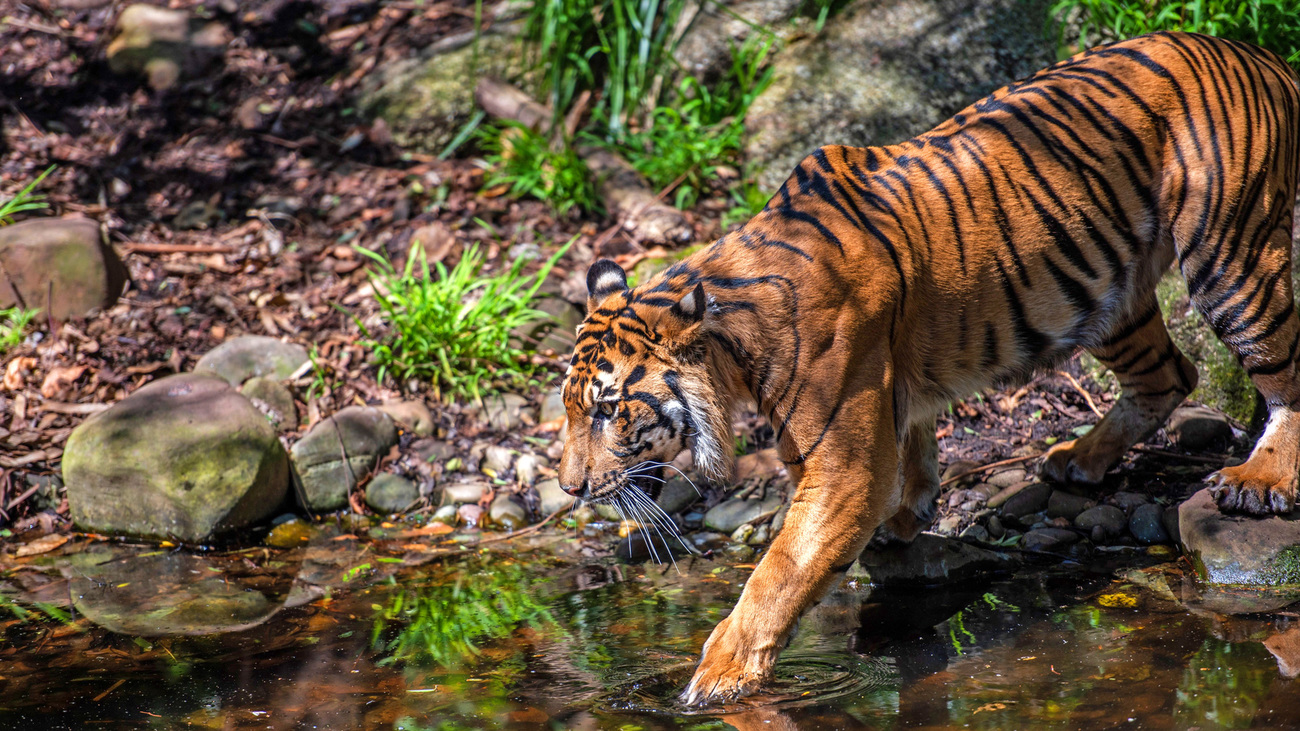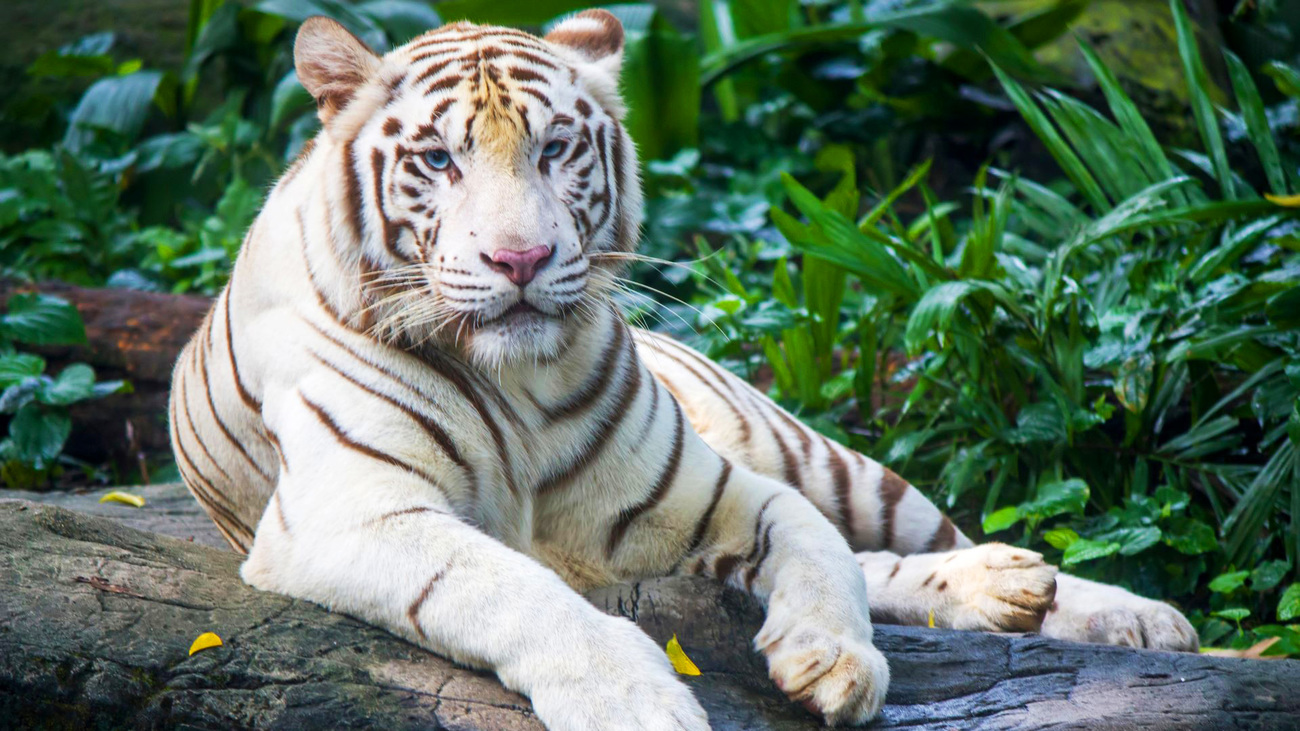Renowned for their strength, beauty, and ferocity, tigers (Panthera tigris) are the largest members of the cat family in the world. Tigers are found in the grasslands, swamps, forests, and taiga of Asia, as far north as Siberia and as far south as Sumatra. Different subspecies of the tiger live in different parts of the continent and are adapted to these different environments.

Sadly, these amazing animals are endangered throughout their range, facing threats of poaching, habitat loss, human-wildlife conflict, and climate change. Tigers are also often held in captivity in poor conditions, including in tiger farms, where they are exploited to supply the illegal live animal trade.
IFAW is working to protect tigers, both in their native habitats and in places where they’re held captive. We work with the Wildlife Trust of India (WTI) to rescue tigers from the annual floods in Kaziranga National Park, and we also support rangers in their protection of tigers from poaching.
IFAW-WTI has been working in Central India for over a decade mitigating human-tiger conflicts, allowing safe passage to moving tigers, reducing human pressures on already fragmented corridors, and integrating stakeholder support in conservation management of tiger habitats. IFAW-WTI has also worked to strengthen protection for these big cats and other species by building capacity for rangers, providing legal and enforcement assistance to wildlife enforcement agencies, and conducting anti-snare walks in critical tiger habitats.
In 2018, we helped launch the Coalition to End Wildlife Trafficking Online. As part of the coalition, companies and wildlife experts from around the world came together to develop an approach to reducing wildlife trafficking online. Since then, online technology companies within the coalition have removed or blocked over 12 million online listings for endangered and threatened species, including tigers.
In the US, we established the Big Cat Sanctuary Alliance, a network of real sanctuaries that provide rescued captive tigers with homes. We also worked to get the Big Cat Public Safety Act passed in December 2022, which made private ownership of big cats illegal and prohibits physical contact between the public and captive big cats.
Raising awareness about tigers and the threats they face are crucial parts of our conservation work. With that in mind, here are 15 incredible facts about tigers that might surprise you.
15 facts about tigers

1. There are more tigers in captivity in the US than there are in the wild in Asia. In just the US, there are as many as 10,000 big cats in captivity, and they often are subject to terrible living conditions. Many private owners masquerade as sanctuaries and operate with little accountability. In the wild, there are only about 3,100 tigers remaining.
2. Tigers hide the carcasses of their prey. After consuming the amount they need, tigers will hide the remains of these animals, sometimes using leaves and dirt to cover it. This is to prevent scavenger animals, such as vultures, from consuming the rest of the meat, allowing the tigers to return to them for a later meal.
3. The average lifespan of a tiger is about 10 to 15 years. On rare occasions, they can live up to 20 years. This is comparable to the maximum lifespan of lions, which can typically live up to 16 years in the wild. Other big cats live similarly long lives, though leopards and jaguars have a bit higher of an expected range than tigers. Snow leopards live for 10 to 12 years, leopards for 12 to 15 years, and jaguars for 12 to 16 years. Compared to domesticated house cats, which live for an average of 13 to 14 years, tigers live shorter lives. However, in captivity and with access to veterinary care, some tigers survive into their 20s.
4. Though there is some dispute over how many tiger subspecies exist, it’s generally agreed that there are six types of tigers. This includes the Siberian or Amur tiger, which is found in the Russian Far East and Northeast China. These tigers were once also present in the Korean peninsula, but it is believed that they have gone extinct there. Another subspecies is the Bengal tiger, found in India, Bangladesh, Nepal, Bhutan, and southwestern China. The Sumatran tiger is found only on the Indonesian island of Sumatra. The Indochinese tiger is found in Southeast Asia, including in Thailand and Myanmar. The South China tiger inhabits parts of southeastern China. Lastly, the Malayan tiger is native to Peninsular Malaysia.
5. Sumatran tigers are the smallest tiger subspecies, weighing up to 140 kilograms (310 pounds) and measuring about 2.4 meters (eight feet) long from their nose to the tip of their tail. Siberian tigers are the largest tigers, weighing about 300 kilograms (660 pounds) and measuring about three meters (10 feet) long—comparable in weight to a grizzly bear.
6. White tigers—tigers that have inherited the trait of albinism—are very rarely seen in the wild, but they are more often bred in captivity. Because albinism is a recessive genetic trait, it is typically the result of inbreeding. When tigers in tiger farms are forced to inbreed, it often leads to complications and disease because they end up having weaker genetics. Issues that result from inbreeding and are common in white tigers include vision problems, shortened tendons in their front legs, clubfoot, kidney problems, crooked spines, and low fertility.

7. Tigers are great swimmers. Because they are not as tolerant of heat as other big cats, tigers living in warmer climates often swim and bathe in the water to cool down. They have webbed paws, which helps them paddle, and muscular bodies. Tigers have been recorded swimming distances of 29 kilometers (18 miles) across rivers.
8. Tigers need a lot of space to roam. In one night, they may prowl up to 32 kilometers (20 miles) in search of prey like antelope, buffalo, deer, and wild pigs. They can run up to 45 kilometers per hour (28 miles per hour) when in pursuit. This is one reason why keeping tigers in confined spaces is so detrimental to their health. They need very large areas to fulfill their physical and psychological needs.
9. Like our fingerprints, tigers’ stripes are unique to each individual. No two tigers will ever look exactly the same. Conservationists can use these unique markings to identify individual tigers and keep track of population numbers. Having irregular vertical stripes helps tigers blend in with tall grasses so they can remain stealthy when stalking their prey. Deer and other hoofed animals tigers hunt are colourblind, so they see their orange coats as a similar colour to grass and leaves.
10. Tigers have white spots on the back of their ears that serve a few different purposes. For all tigers, they act as a pair of false eyes, confusing other animals—they won’t know which way the tiger is facing. For mother tigers, they act as signals for their cubs. When a mother tiger senses danger, she flattens her ears, and the cubs respond by lowering themselves to the ground to stay hidden.
11. Tigers don’t need to eat a lot. In fact, they only need about one meal per week. However, they still hunt every day, as only about one in 10 of a tiger’s hunting attempts are successful.
12. The tiger population has declined by 97% in the last century. Their decline is largely attributed to poaching, although habitat loss plays a major role, too. Tigers are poached both for the live animal trade but also for their body parts, including their skins, bones, claws, organs, meat, and teeth. Their parts are often sold for tens of thousands of dollars and are used in jewelry, traditional medicine, clothing, accessories, and trophies.
13. Tigers were once found in Turkey, the Caucasus region, Iran, Central Asia, and southern Russia. The tigers found in this part of the world were called Caspian tigers, but this subspecies went extinct in the last few decades of the 20th century, last seen in the 1970s. They were largely depleted due to hunting of both tigers and their prey species.
14. Over 100 tigers are trafficked every year. In 2022, an analysis found that parts and live animals equivalent to about 150 tigers were seized in trafficking each year for about 23 years. Since this only accounts for tigers and tiger parts that have been seized from traffickers, we don’t know how many more tigers are killed or taken from the wild.
15. Tigers pack a punch. When tigers strike with their paws, the force is powerful enough to kill a human or at least break a lot of bones. Their claws can also break major blood vessels with just one swipe. In addition, their teeth are strong enough to puncture skulls, which is often how they catch and kill their prey.
Want to help protect these incredible, endangered animals?
Related content
every problem has a solution, every solution needs support.
The problems we face are urgent, complicated, and resistant to change. Real solutions demand creativity, hard work, and involvement from people like you.